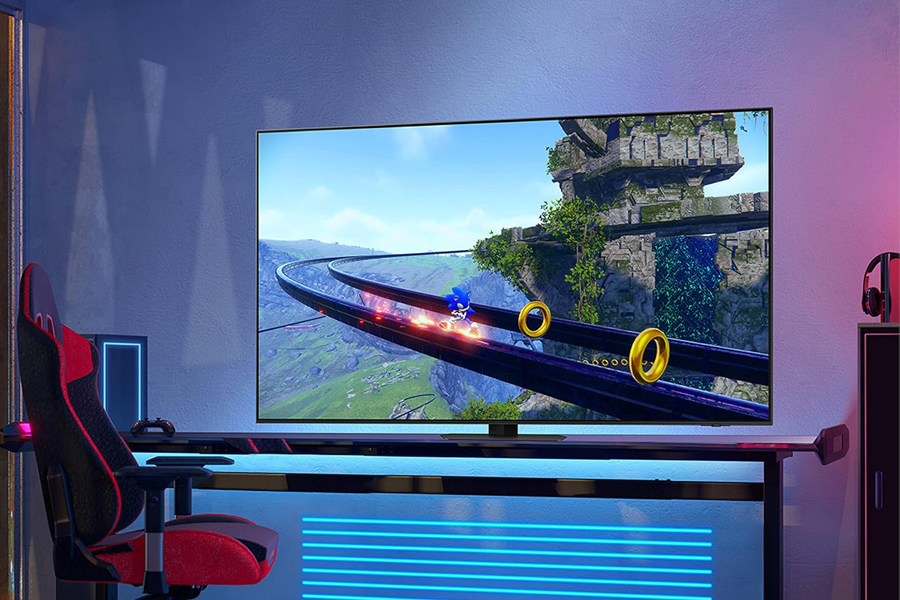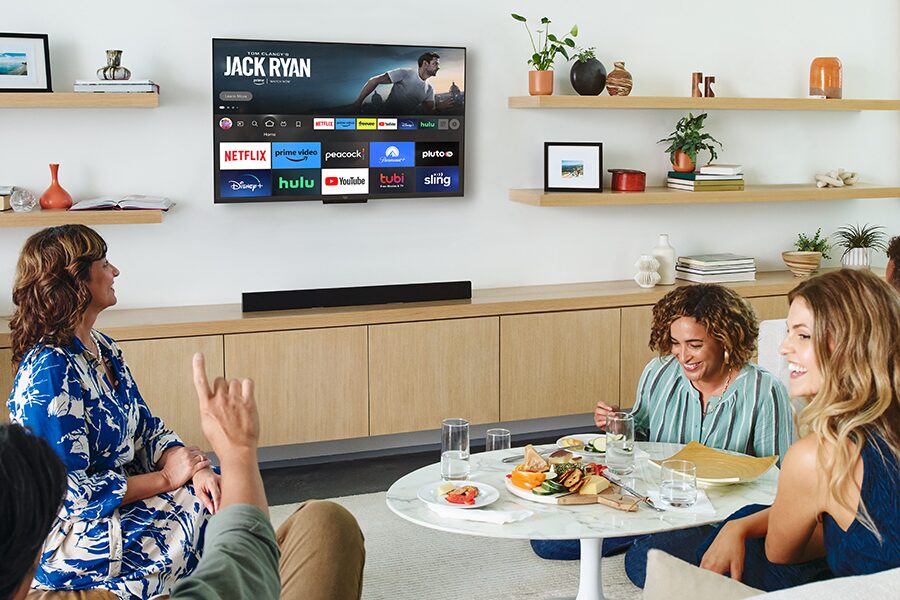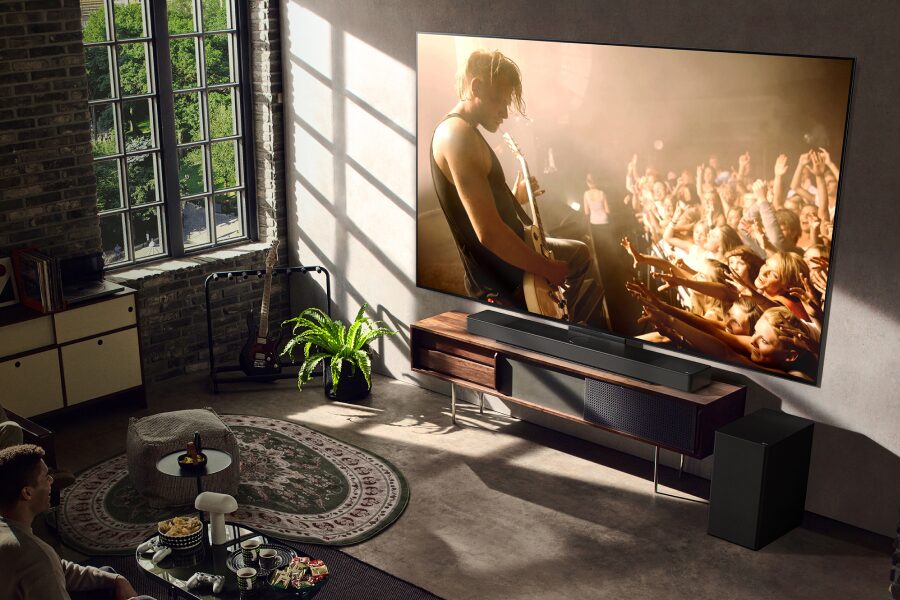High dynamic range (HDR) is a game-changing technology that dramatically enhances the picture quality of modern TVs. HDR offers improved contrast, brightness, and color accuracy, compared to traditional standard dynamic range (SDR). Whether you’re watching movies, playing video games, or streaming shows, HDR is a must-have. But with multiple HDR formats available, understanding the differences is essential when choosing the right TV.
If you’re hunting for online 4K TV deals, knowing which HDR format to look for can make a big difference. Some HDR formats, like Dolby Vision and HDR10+, offer dynamic adjustments for optimal brightness and color. Others, like HDR10 and HLG, provide broader compatibility. If it all sounds a bit confusing, worry not. Below, we’ll break down the different types of HDR and help you decide which one you should look for before you buy.
So, what is high dynamic range (HDR)?
High dynamic range, also known as wide dynamic range, is a technology found on newer TVs, computer monitors, and other displays. It enhances the contrast, brightness, and color range of a video display, making images appear more vivid and lifelike. HDR achieves this by expanding the difference between the darkest and brightest parts of an image. This expanded range allows for deeper blacks, brighter highlights, and more detailed mid-tones. This results in greater realism, more nuanced shadow details, and a more immersive viewing experience.
So, why is this important? Traditional standard dynamic range (SDR) displays have a limited contrast and color range. In simpler terms, this means that they can only show a fraction of what the human eye can actually perceive. HDR overcomes this limitation, making movies, TV shows, and video games look more dynamic and “true to life.” Virtually all new TVs have some sort of HDR technology. They’re not all the same, however. If you’re shopping for a new TV, it’s essential to have a basic understanding of the different HDR formats.

Different types of HDR, explained
Not all HDR is created equal. There are several different formats, each with its own specifications and compatibility requirements. Let’s break down the most common HDR formats you’ll encounter when shopping for a TV.
HDR10: The industry standard
HDR10 is the most common HDR format and the baseline for most HDR-compatible content. It uses static metadata, which means the brightness and color settings are determined once for the entire movie or show. With a 10-bit color depth, HDR10 provides a noticeable improvement over SDR, though it lacks scene-by-scene optimization.
Pros:
- Universally supported on nearly all HDR TVs, gaming consoles, and streaming devices
- Free and open standard, making it widely adopted
Cons:
- Static metadata means it doesn’t adjust dynamically to different scenes
- Less precise than some other HDR formats
HDR10+: An upgrade to HDR10
HDR10+ builds upon HDR10 by adding dynamic metadata. This allows brightness and color levels to adjust on a scene-by-scene (or even frame-by-frame) basis. This leads to better contrast and color accuracy compared to standard HDR10.
Pros:
- Improved image quality over HDR10 due to dynamic metadata
- Supported by major manufacturers like Samsung
Cons:
- Less widely adopted than HDR10 and Dolby Vision
- Limited support on some devices and content providers

Dolby Vision: The high dynamic range gold standard
Dolby Vision is one of the most advanced HDR formats available. It offers dynamic metadata along with support for 12-bit color depth and peak brightness levels up to 10,000 nits (though most TVs currently top out at around 4,000 nits). It dynamically adjusts color and brightness scene by scene, ensuring the most accurate reproduction possible.
Pros:
- Best overall picture quality with higher brightness, better color depth, and dynamic adjustments
- Supported by many streaming services, Blu-ray discs, and high-end TVs
Cons:
- Requires Dolby Vision-compatible hardware
- Licensed format, meaning not all manufacturers include support
Hybrid Log-Gamma (HLG): The broadcast standard
HLG is an HDR format developed for live TV broadcasts. Unlike other HDR formats, HLG is backward-compatible with SDR displays. This makes it a good choice for sports, news, and live events where content needs to be accessible across various screens.
Pros:
- Ideal for live TV and sports broadcasts
- Backward-compatible with SDR TVs
Cons:
- Limited use outside of broadcast television
- Lacks the scene-by-scene enhancements of HDR10+ and Dolby Vision
Advanced HDR by Technicolor: A lesser-known contender
This format was developed to improve HDR compatibility across different devices and to enhance both SDR and HDR content. However, it has not been widely adopted, making it a less common choice for TV shoppers.
Pros:
- Designed for better SDR-to-HDR conversion
Cons:
- Limited content and device support

Which HDR format should you look for?
When shopping for a new TV, it’s important to consider what type of HDR support it offers. Here’s a general recommendation based on different viewing needs:
- For the best HDR experience: Look for a TV that supports Dolby Vision, which is the current HDR gold standard. It provides the highest quality with dynamic adjustments and superior brightness/color.
- For broad compatibility: HDR10 is the safe choice, as it’s supported by nearly all HDR TVs and content.
- For future-proofing: HDR10+ is a good option, though content availability is still growing.
- For live TV and sports fans: HLG support is ideal if you watch a lot of live broadcasts.
Most modern TVs support multiple HDR formats. However, higher-end models tend to offer better HDR performance due to superior panel brightness and processing power.
High dynamic range: The final word
High dynamic range is one of the biggest recent advancements in display technology. It offers better contrast, richer colors, and a more immersive viewing experience than SDR displays of yesteryear. While HDR10 is the most common standard, Dolby Vision provides the best quality, and HDR10+ offers a solid middle ground. When buying a new TV, pay attention to HDR support to ensure you get the best possible picture quality. With the right HDR-enabled TV, your movies, shows, and games will look more stunning than ever.




